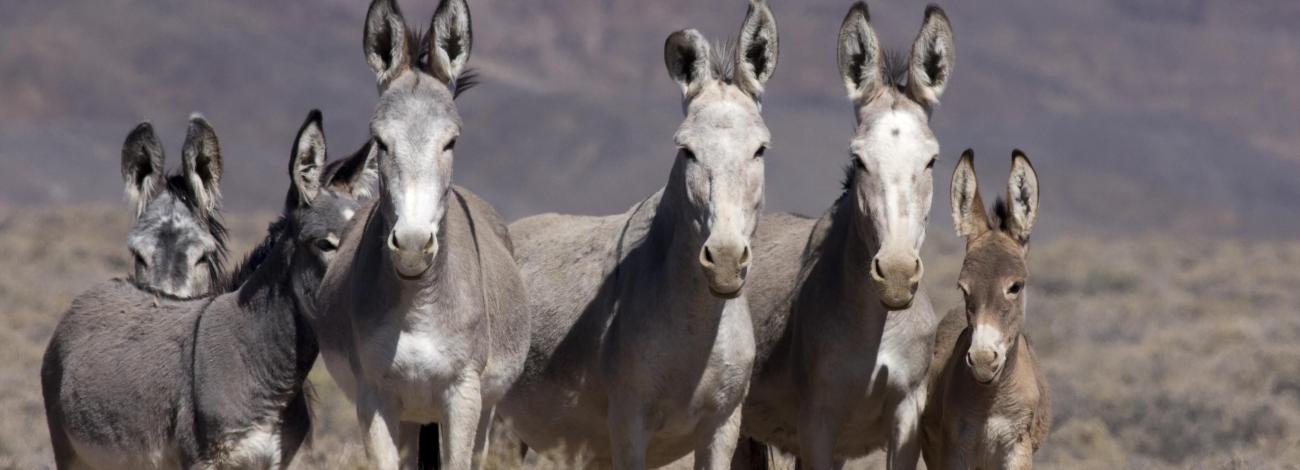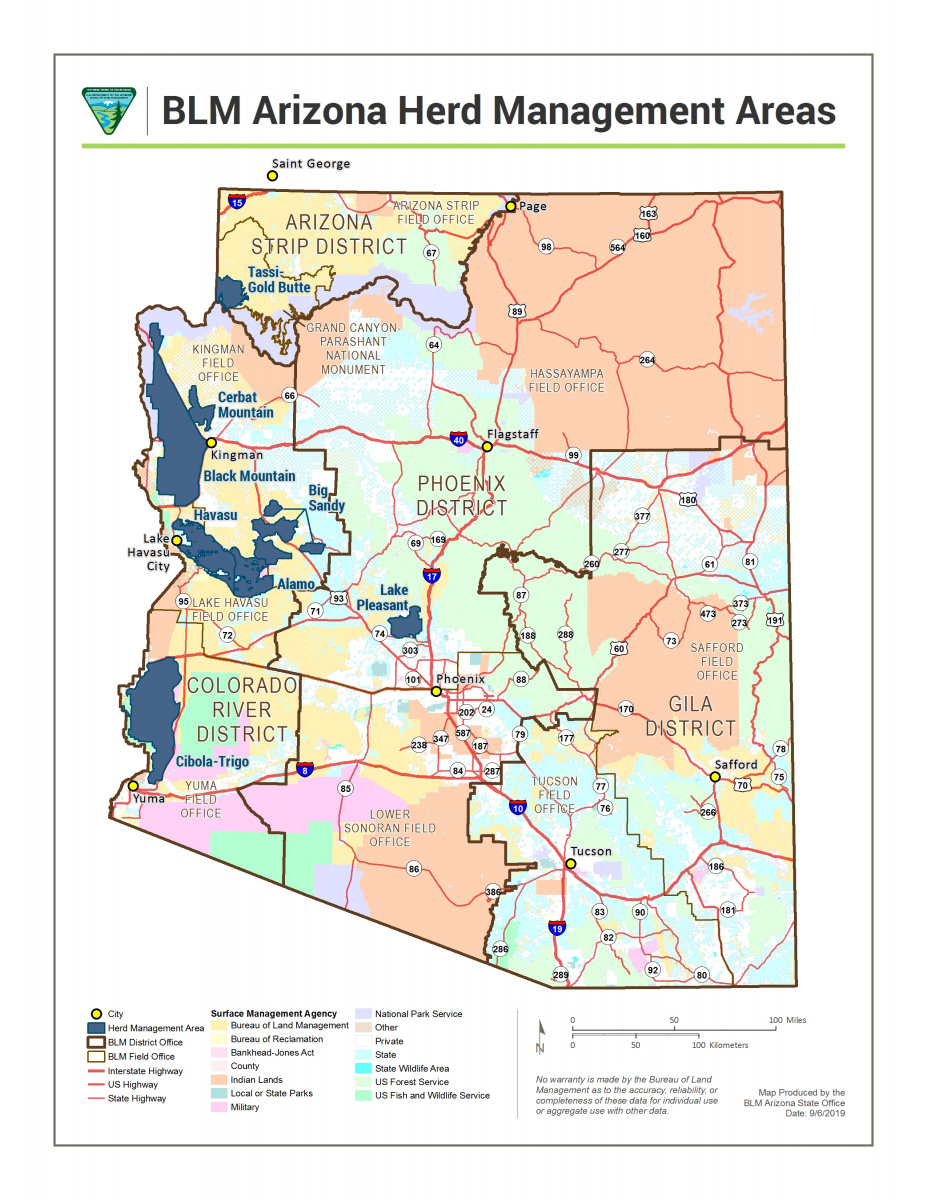
Havasu HMA
Burros evolved in the deserts of North Africa and adapted very well to the desert environment of the Havasu Herd Managment Area (HMA). Left alone in this remote region with few natural predators, the wild burro population thrived. Today, the population is estimated to be 178 animals, with about half living within the Arizona portion of the HMA. About 90 percent of the burros are gray, with the remaining 10 percent black, brown, white pinto or piebald. Some burros possess the shoulder cross characteristic of the ancestral Nubian wild ass, and many have leg barring associated with the Somali wild ass. Adult burros average 48 inches in height and weigh about 350 pounds. During the summer months, the burros concentrate, generally within a mile or so of major water sources. During cooler months, the animals move into the mountains and scatter throughout the region.
Location: The Havasu Herd Management Area (HMA) is south of Lake Havasu City along the Colorado and Bill Williams rivers. The HMA includes land on both sides of the Colorado River. The HMA is adjacent to the Chemehuevi HMA in California.
Size: The Havasu HMA contains 450,790 acres of Lower Colorado Sonoran Desert. In Arizona, the HMA measures 372,570 acres, while the California portion encompasses 78,220 acres.
Topography/Vegetation: The wild burros living within the Havasu HMA roam freely throughout the entire area, which is characterized by arroyo-scarred alluvial fans and steep, rocky volcanic mountains. There are four major vegetation communities found within the HMA. These are open hills covered with creosote bush; primary and secondary washes known for their paloverde and burro bush; and, secondary washes made up primarily of paloverde and creosote. Summer temperatures are hot, with the thermometer sometimes rising above 125 degrees. The area has 100 days per year of 100-degree temperatures.
Wildlife: Wild burros share this habitat with desert bighorn sheep and desert mule deer. Other animals in the area include small mammals, desert tortoise, several species of rattle snake, a variety of bird such as the southwestern willow flycatcher, lizards and amphibians.
AML: 133-166

